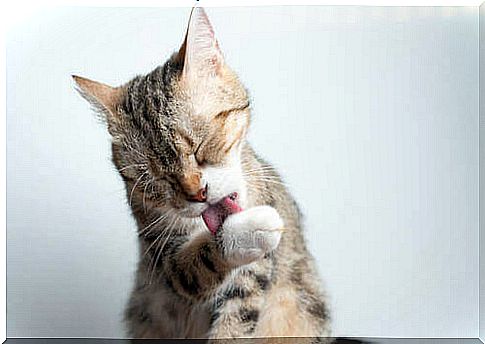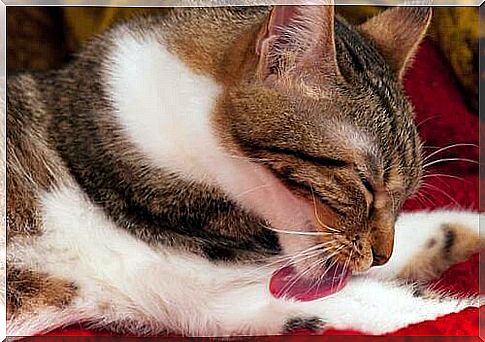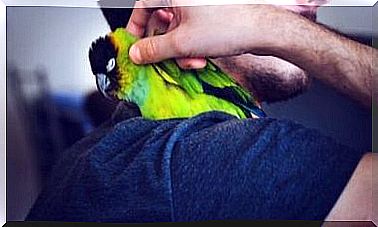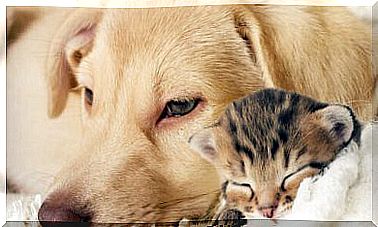Symptoms Of Hairballs In Cats: How To Recognize Them

Felines are known to be extremely clean and spend many hours a day licking themselves. This is a good thing because they will never be dirty, but it can also have negative consequences, such as the formation of hairballs in cats. In this article we tell you how to recognize the symptoms of hairballs in cats.
Why do hairballs form in cats?
As a first step we need to learn something about cat habits. Cats spend a lot of time keeping their fur clean and in excellent condition. This is why their tongue “scratches”, since they use it to remove dirt and comb their hair.
As far as hygiene is concerned, this is a great way to keep themselves clean, but the problem is that animals do not have the ability to spit out the hairs that get trapped in the tongue, so they swallow them. This happens all the time, so hairballs form in the stomach which can lead to several complications.
It is very important to pay attention to our pet’s behavior in the spring to prevent hairball production from becoming a serious health problem.
Also, in case you have a longhaired cat, such as a Persian, a Maine Coon, a Turkish Angora or a Balinese cat, it is essential to pay attention to the time of the fur shedding before summer.

What are the symptoms?
In most cases you will see and hear your pet start coughing and after a few seconds excrete a hairball which he will likely swallow or possibly spit again.
However, when she is going through moulting, not only will this episode be recurring, it will also be accompanied by other symptoms or changes in her behavior.
This clinical picture should not be maintained for more than two days without being checked by a veterinarian. These are the main symptoms of hairball formation in cats:
- Half solid and half liquid vomiting.
- Frequent retching.
- Regurgitation.
- Swollen belly.
- Constipation.
- Cough.
- Apathy and depression.
- Strange behaviors, bad mood, irritability.
How to prevent and treat hairballs in cats?
Owners want their pet to always be in good condition and in perfect health. The formation of hairballs in cats is normal and occurs every year, however possible complications must be prevented.

The first thing to do to avoid this condition is to brush your cat’s fur daily or every other day. This way, a good amount of hair will stay in the brush and go to the trash, not the stomach.
If you have a puppy, it will be easier to get used to this gesture, but in case the animal is older and does not want to be brushed, you can simply take the opportunity to stroke it and remove the hair with your hand.
It is very important to rule out that the animal has a digestive or intestinal problem. For example, due to slow digestion or the appearance of too dry stools due to the type of diet. Some doctors point to a change in diet, which includes fish, chicken, or liver, to help them defecate.
When a cat suffers from the formation of hairballs in the stomach, some vets prescribe a purge that allows them to expel them through the feces. For example, you can try giving him catnip (also known as catnip ), valerian or even petroleum jelly, always under the supervision of a trusted professional.









